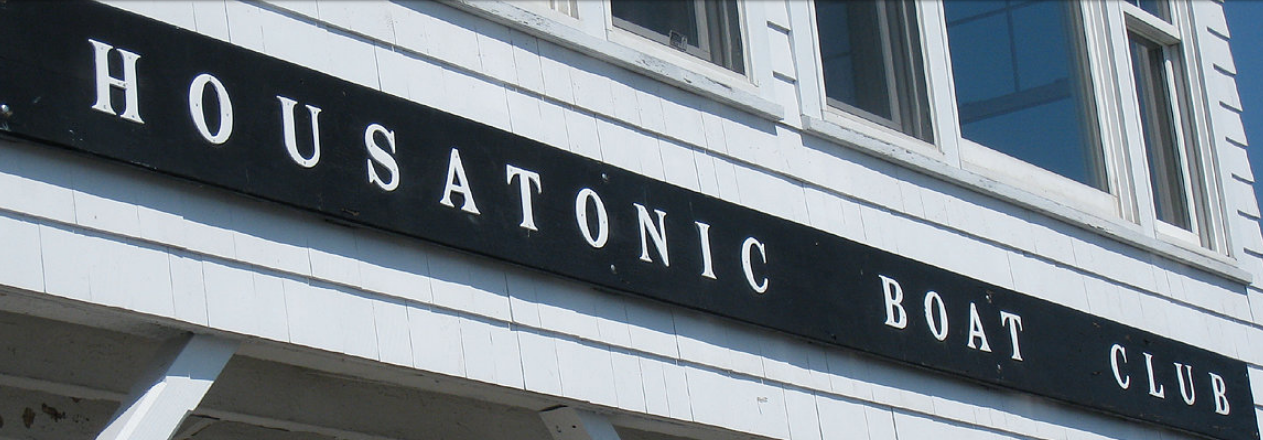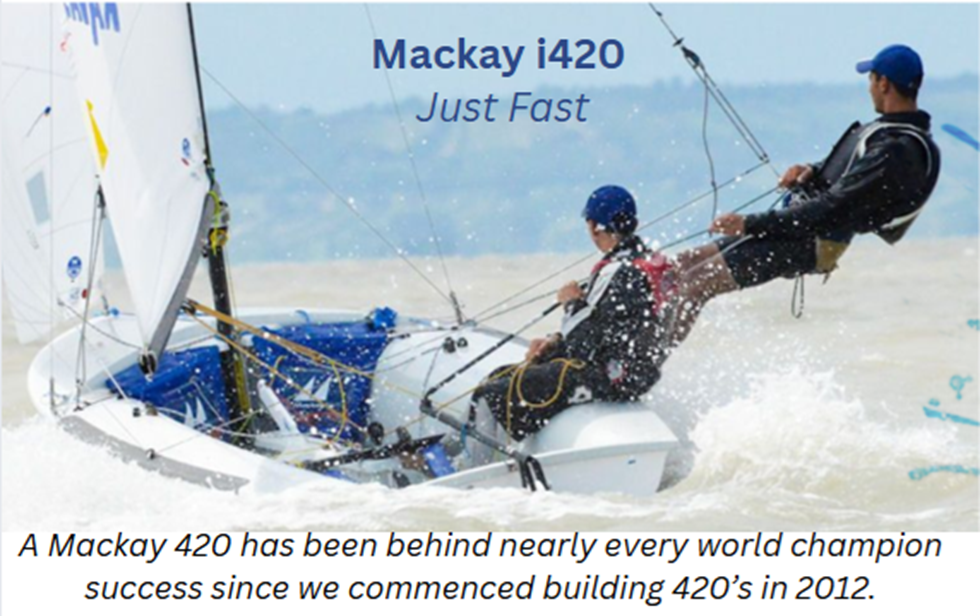
HBC, THE OLDEST ACTIVE YACHT CLUB IN THE STATE
On January of 1887 seven Stratford men, John and Frank Benjamin, Frederick C. Beach, Henry Parson, The Wheeler brothers and George Strong, met to form a club for, as our charter reads “ …social intercourse, and to promote and encourage an interest in yachting.” and the Housatonic Club was formed. By April of that year its two-story clubhouse was raised on pilings at the edge of the river channel on the property of Alfred Ely Beach, Frederick Beach’s father and publisher of Scientific American. The site was chosen for its commanding view of the river, and an easy reach up or down the river in the prevailing southwesterly breeze.
JUNIOR SAILING PROGRAM
The Housatonic Boat Club’s Junior Sailing Program offers youngsters (ages 8 to 16) an opportunity to learn the basic skills of sailing and to gain more proficiency as they advance as serious competitors or recreational sailors. Our capable and experienced sailing instructors are US Sailing certified and teach the fundamentals of seamanship from wind direction, the river’s current, sailing rules and racing 
News Flash: The Houstonic Boat Club is hiring a Sailing Director, & Sailing Instructor Positions!
HBC, THE OLDEST ACTIVE YACHT CLUB IN THE STATE
The Housatonic Boat club is in its 129th season – the oldest active yacht club in the state! In January of 1887 seven Stratford men, John and Frank Benjamin, Frederick C. Beach, Henry Parson, The Wheeler brothers and George Strong, met to form a club for, as our charter reads “ …social intercourse, and to promote and encourage an interest in yachting.” and the Housatonic Club was formed. By April of that year its two-story clubhouse was raised on pilings at the edge of the river channel, at a cost of $1,204, and a 200-foot catwalk stretched across the marsh to the riverbank, on the property of Alfred Ely Beach, Frederick Beach’s father and publisher of Scientific American. The site was chosen for its commanding view of the river, and an easy reach up or down the river in the prevailing southwesterly breeze. On 21 May forty-one members held an organizational meeting, and at the official dedication of the clubhouse on the Fourth of July membership in the Housatonic Club totaled fifty-one. John Benjamin, owner of Benjamin J & Co., an early member company of the New York Stock Exchange, was elected first president – the only one ever elected by the general membership – and held that office until his death in 1906, when Frederick Converse Beach succeeded him.

HURRICANES
Storms, ice, hurricanes, and tides have always been a threat to HBC. The disatrous hurricane of 21 September 1938 drowned the Lewises and wiped out their Thimble Island cottage only a week after Club boats visited them; water at the Club rose two feet above the deck. But the worst property damage of all resulted from the surprise hurricane of 1950. Fortunately the clubhouse had been moved onto new pilings in 1948, and the main deck was loaded with twenty tons of mushrooms being winter-stored: it was the only structure to survive. All else was demolished – bathhouses, lockers, floats, even the 200-foot catwalk across the marsh to the bank. Everything had to be rebuilt. But with a bond issue to the members and the work of many eager hands under the skilled direction of Bud Olsen, the Club was soon better than ever, with a new sailhouse and a new bathhouse, and in 1960 a kitchen. But again in 1955 hurricane floods in August and September raged down the river. A derelict barge tore loose and swept through the fleet. Boats picked up their mushrooms and floated out to sea. The river dredge Arundel flipped onto its side across the channel near Crimbo Point, crushing boats swept against it and blocking the Channel for two years. In all, seven HBC boats were destroyed.
Later hurricanes spared us, until the 1985 storm ruined floating equipment and severely damaged docks, again requiring members to rally and repair.
LAND TROUBLE
HBC’s greatest threat was not the weather. In 1952 the Club learned that the land, then in trusteeship to a bank, was about to be sold. A special committee, Ira Peterson, Ray Baldwin, and Al Beach, presented a plan to form a syndicate of members to purchase the Beach estate for the Club. Housatonic Properties was incorporated by nine members, and on 19 March 1954 they bought the whole property, then sold the uplands to the American Shakespeare Theatre with the stipulation that it never be used commercially, and on 17 May 1954 deeded the eleven acres of marshes and the road to the Club. After 67 years, the Club finally owned the land on which it sat.

At the start the fleet included cats, cutters, cat-ketches, and sharpies berthed in slips, with kayaks, canoes, and Whitehalls on the floats. In 1888 James Leavitt introduced the first power boat – a Naphtha launch – which did not require a steam engineer on board, and soon the Beach family owned one, too. Bedell Benjamins’s steam yacht, with five-man paid crew, was too large to keep at the Club, so he tied it up at his own dock, upstream from Bond’s. Soon the first gasoline launches with one-lung engines, appeared.
FACILITIES
The Club’s facilities were intentionally spartan. In 1891 a bathhouse and a sandy beach, reached by a 160-foot plank walk along the edge of the marsh, provided a spot for swimmers. In 1893 John Beach’s studio was floated in for use as a men’s bathhouse. A winter project to lengthen the clubhouse was completed in time for the 9 May 1896 Club opening. Until 1933 oil lamps provided light. Running water came in 1946, when pipes were laid across the fields to Elm Street every spring, and taken up each fall. A one-hole p
CLUB PARKING AND STORAGE
In 1956, although the pristine marsh and catwalk made the decision difficult, the need for Club parking and boat storage demanded that the property be developed. Fill was obtained from the state highway department and local industries for the yard and the road, and both were raised. In 1975 the town offered to oil the road (which belongs to the Club) and in 1977 the yard was fenced. In 1994, the year of the great asbestos scare, DEP spread an impermeable cap across the yard. Then in 2000 the federal EPA further elevated and capped the land, added shoreline rip-rap, paved the boatyard, and fenced and landscaped the property. With a whole new look and with new water and sewer line connections, the Club enters a new millennium.

Much has changed since we toasted this new century. Not only have we adjusted ourselves to the new regulations of the later part of the 1990’s, but also we have enlarged our membership and our fleet, both in length and numbers. Our grounds were dug and capped by the EPA. Opening Day was held “off-campus” that summer, and early on we traveled to and from the mooring field from Birdseye Fishing Dock. A boat barn was constructed so that the members could spend the winters maintaining the club’s launch, Junior Sailing fleet and workboat. The clubhouse had new steel pilings installed to replace the wooded ones that were put under the house in 1979. The launch operator’s office was constructed in place of a few of the sailing lockers. Old windows were replaced with new ones and a new awning was installed to protect us against the elements. Yes, we move along, thanks to the unique Corinthian spirit of our membership.
Historical Information extracted from Club’s former Commodore Lew Knapp in his book Stratford and the Sea


Leave a Reply